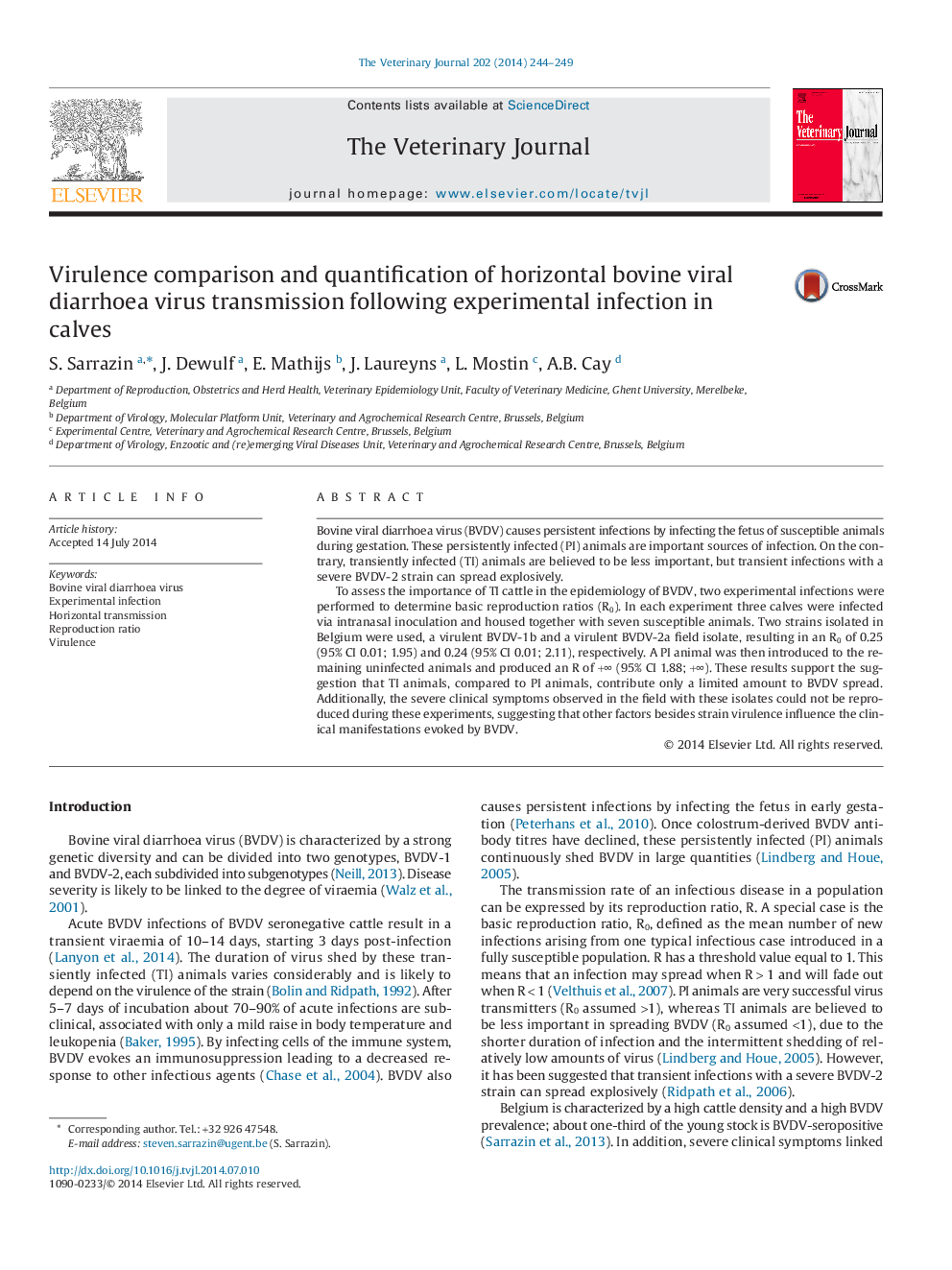| Article ID | Journal | Published Year | Pages | File Type |
|---|---|---|---|---|
| 2463904 | The Veterinary Journal | 2014 | 6 Pages |
•A persistently infected animal was demonstrated to be a successful BVDV transmitter.•A very limited BVDV spread was noticed by transiently infected animals.•The severe clinical symptoms observed in the field could not be reproduced.
Bovine viral diarrhoea virus (BVDV) causes persistent infections by infecting the fetus of susceptible animals during gestation. These persistently infected (PI) animals are important sources of infection. On the contrary, transiently infected (TI) animals are believed to be less important, but transient infections with a severe BVDV-2 strain can spread explosively.To assess the importance of TI cattle in the epidemiology of BVDV, two experimental infections were performed to determine basic reproduction ratios (R0). In each experiment three calves were infected via intranasal inoculation and housed together with seven susceptible animals. Two strains isolated in Belgium were used, a virulent BVDV-1b and a virulent BVDV-2a field isolate, resulting in an R0 of 0.25 (95% CI 0.01; 1.95) and 0.24 (95% CI 0.01; 2.11), respectively. A PI animal was then introduced to the remaining uninfected animals and produced an R of +∞ (95% CI 1.88; +∞). These results support the suggestion that TI animals, compared to PI animals, contribute only a limited amount to BVDV spread. Additionally, the severe clinical symptoms observed in the field with these isolates could not be reproduced during these experiments, suggesting that other factors besides strain virulence influence the clinical manifestations evoked by BVDV.
